Pulut Tai Tai Photo: Meg Tan
By: Meg Tan
Pulut Tai Tai – pressed glutinous rice with coconut egg custard (kaya) — is a traditional Peranakan (Straits Chinese) dessert often served at weddings. In Peranakan cooking, butterfly pea flower is often used as natural food colouring. In Meg Tan’s version, she pipes kaya or coconut egg custard as rosettes to crown each glutinous rice square.
Total Time: 13-14 hours
Cost: < $10.00
Difficulty: 3/5
Yields: 24 pcs
 A: Glutinous Rice Layer
A: Glutinous Rice Layer
500g white glutinous rice, washed
30 pcs dried butterfly pea flowers (bunga telang)
600ml water
200ml pure coconut cream*, freshly squeezed
1 teaspoon salt
3-4 pandan leaves, washed and cut into 7cm pieces
B: Coconut Egg Custard (Kaya)
3 large eggs, approximately 70-75g each
190ml pure coconut cream*, freshly squeezed
140g castor sugar
3 tsp concentrated pandan extract**
C: For Steaming
1 large banana leaf, cut into 50cm x 15cm, 2 pieces
2 square cake tins, 15cm x 15cm
DIRECTIONS:
1. Make kaya ahead of steaming rice. In a medium mixing bowl, combine B ingredients. Using a whisk or a pair of chopsticks, mix until sugar has melted. Sieve mixture.
2. Use a double boiler to cook kaya: fill up larger lower pot midway with water. Pour egg mixture into the smaller pot. Using a spatula, stir continually until custard thickens and reaches a thick and gooey consistency, around 1.5 to 2 hours.
3. Remove from heat. Allow kaya to cool down. Set it aside.
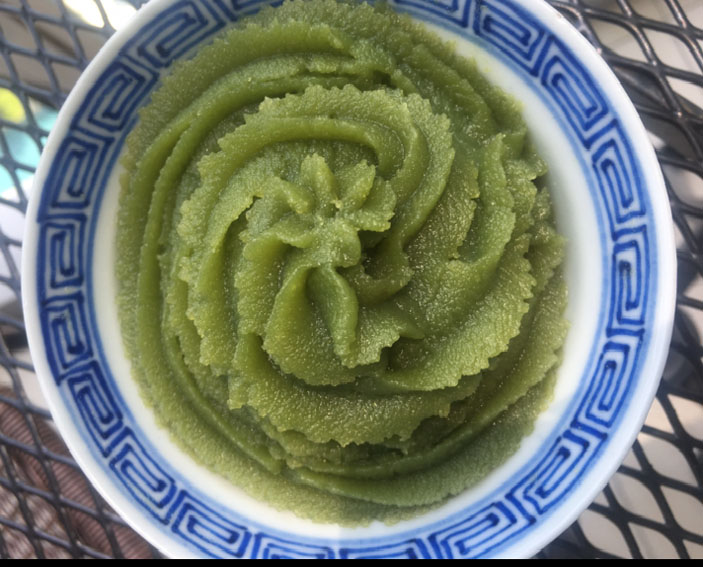 Kaya Rosette: Use a piping bag fitted with a nozzle to pipe kaya. Photo: Meg Tan
Kaya Rosette: Use a piping bag fitted with a nozzle to pipe kaya. Photo: Meg Tan
4. Place dried flowers into a small saucepan. Add 375ml water. Bring it to a boil until you get a royal blue hue. Sieve blue-tinted water into a mixing bowl. Discard flowers.
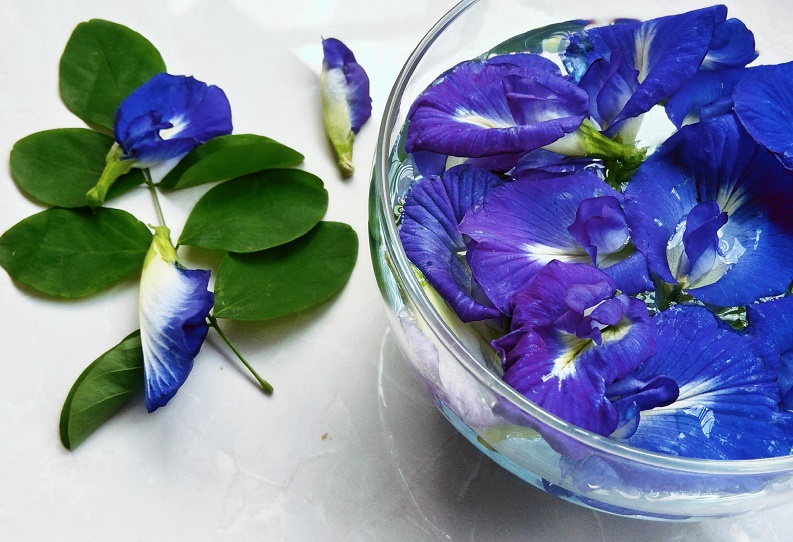
Fresh butterfly pea flowers. Photo: Evonne Lyn Lee
5. Divide rice into equal portions. Put them into 2 separate medium mixing bowls. Soak one portion in plain water and the other in blue-tinted water overnight.
6. The next day, drain rice. Discard soaking water. Combine plain rice with 50ml coconut cream, 100ml water and ¼ teaspoon salt in a 20cm deep plate.
7. For blue-tinted rice, combine 50ml coconut cream, 100ml water and ¼ teaspoon salt in a 20cm deep plate. Place 6 pieces pandan leaves each on top of white and blue rice.
8. Fill up the steamer with water up to the steaming rack. Bring water to a rolling boil. Steam both trays of rice separately for 25 minutes each. Fluff rice midway through steaming to ensure even cooking. To test if rice is fully cooked, use a fork to pick up a few grains and break them. If there’s no white centre, rice is done.
9. Using a pair of chopsticks or fork, fluff up cooked rice to loosen grains. Stir 50ml coconut cream into each tray of rice together with ¼ teaspoon salt. Mix thoroughly.
10. Line base of the square cake tin with 2 pieces of banana leaves – there will be an overhang.
11. Using a slotted spoon, drop alternate dollops of white and blue rice onto the base of the tin. Use kuih lapis press (see photo below. A contraption used to make Indonesian layered cake known as kuih lapis. ) to compress rice. Fold banana leaf overhang over rice.
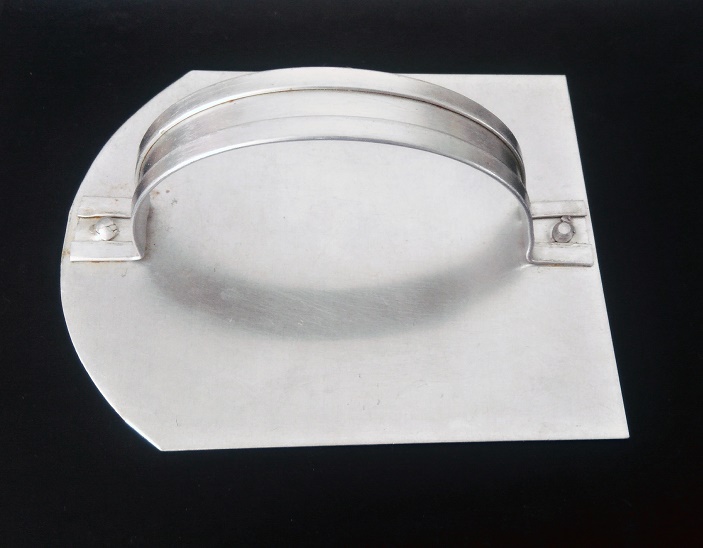
Kuih Lapis press. Photo: Evonne Lyn Lee
12. Place second cake tin on top. Weigh it down with something heavy (e.g. dumbells, pestle or heavy books) for at least 6 hours.
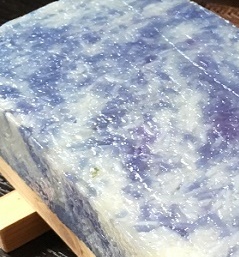
Pressed Glutinous Rice. Photo: Meg Tan
13. Cut compressed rice into 2cm x 5cm pieces.
14. Fit a nozzle with a floral motif (Wilton 1M tip). Half fill up a piping bag with kaya. Holding bag above glutinous rice squares, pipe a kaya rosette on each square.
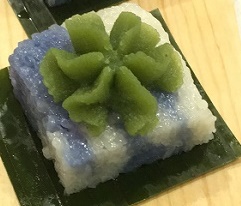
15. Serve immediately. This dessert is best eaten at room temperature.
**TIP: To make concentrated pandan extract, start 4 days ahead. Wash and cut 20 pieces of leaves into 2cm strips. Place a handful into a food processor with enough water to cover. Pulse until fairly fine. Repeat until all pandan leaves have been processed. Sieve then discard pulp. Pour pandan extract into a tall glass. Refrigerate for 3½ days. The green layer that separates from water is concentrated pandan extract. Alternatively, use ½ teaspoon of store-bought pandan paste.
*NOTE: Coconut cream is the first extraction without any added water. It is thick, pure and concentrated.
TECHNIQUE: Weighing down cooked rice produces a compact and firm texture. During the process, coconut oil is released which coats pressed rice with a sheen.
Baking and cooking are avenues for Meg to unwind after a tough day or week in the office.
You might also want to try these Whip It UP! recipes:
Salt-baked Salmon — Whip It UP!
Orange Butter Cookies — Whip It UP!
Click on www.storm.sg/food for more recipes and reviews of restaurants.
If you have a simple recipe you would like to share, do email it to whipitup@storm.sg


















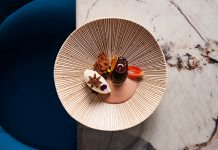





Must try this. Pulut Tai-Tai by Meg Tan from http://www.STORM.SG magazine.
Thank you Meg. My creeper has started bearing flowers, so I will be trying this recipe this coming weekend.